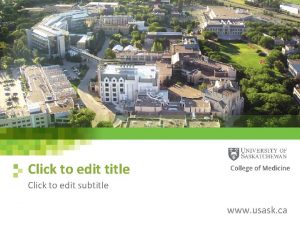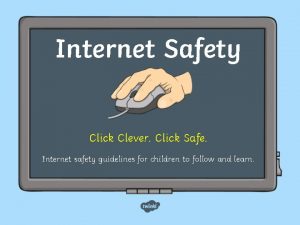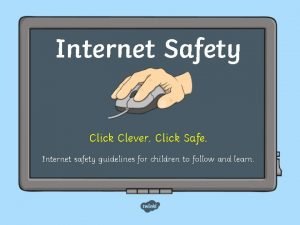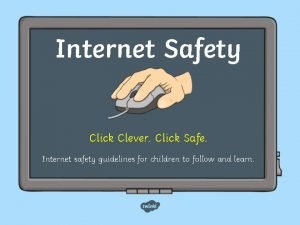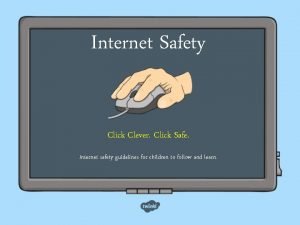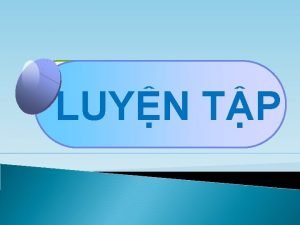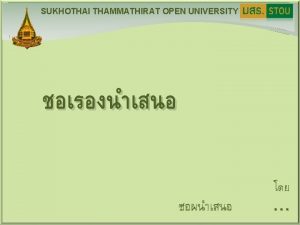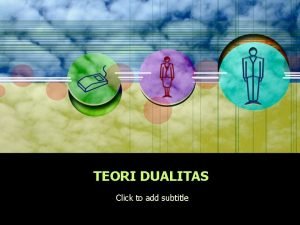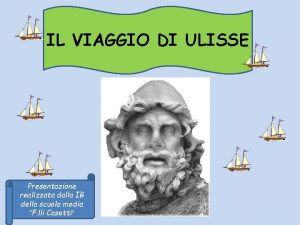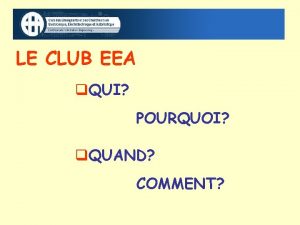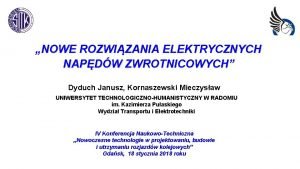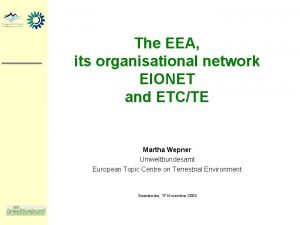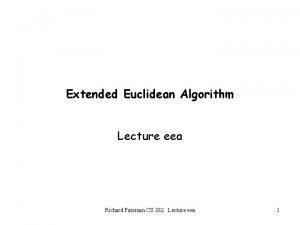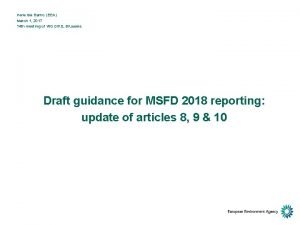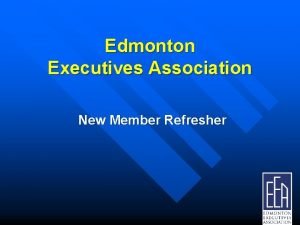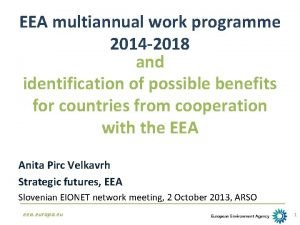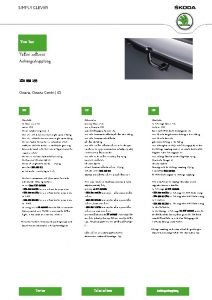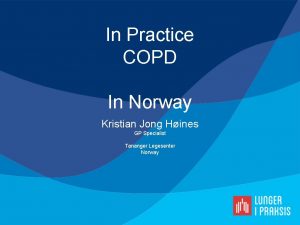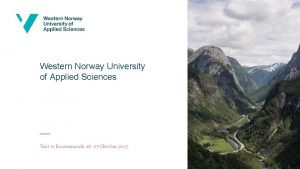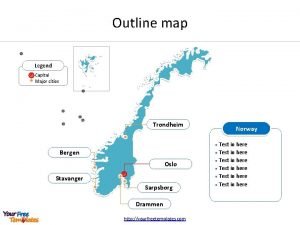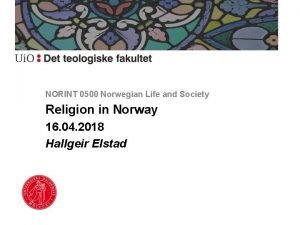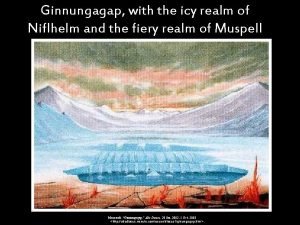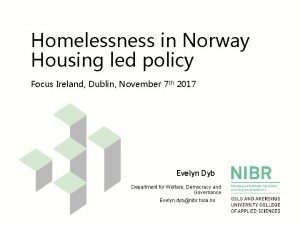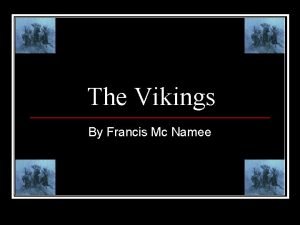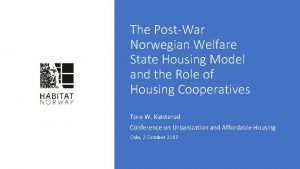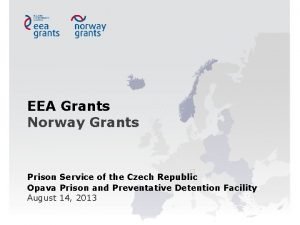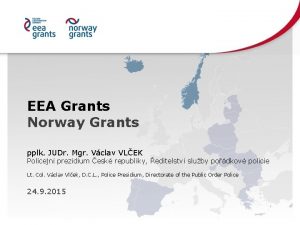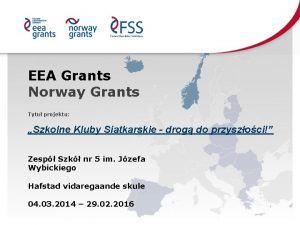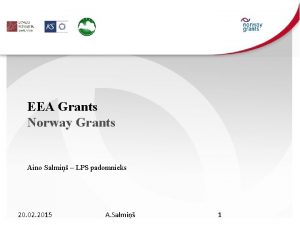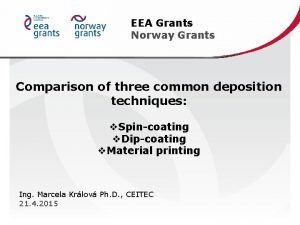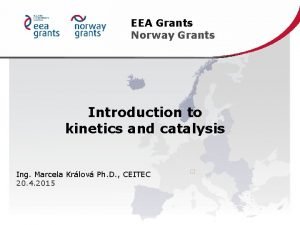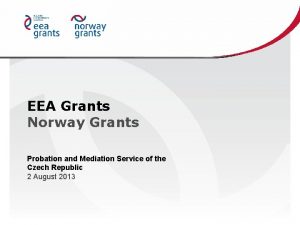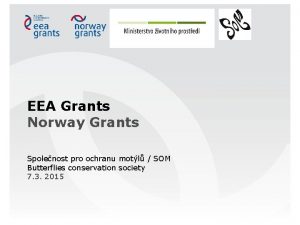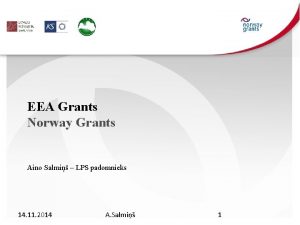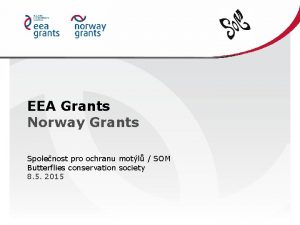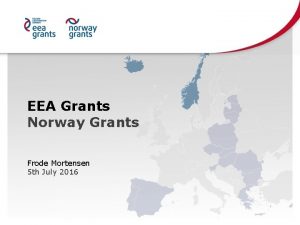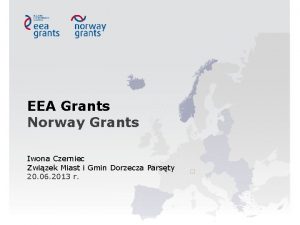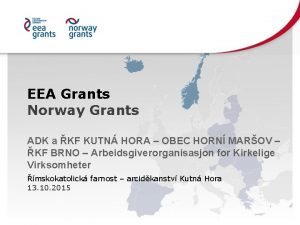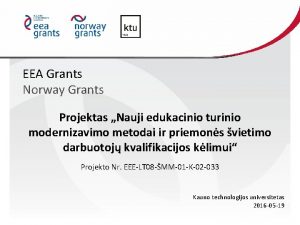EEA Grants Norway Grants Click to add text



































- Slides: 35

EEA Grants Norway Grants

• Click to add text.

Masaryk University, Faculty of Economics and Administration Department of Applied Mathematics and Computer Science • Applied Research • Basic Research • Teaching

Applied Research • Methods: Linear Models, Multivariate Analysis, Nonparametric Modeling, Structural Equation Models, …; Linear Programming and related topics, Multicriteria Decision Making analysis, Data Envelopement Analysis , Fuzzy Optimization & MDMA; Operational Research, Fractal Geometry; Text Mining; Big Data • Areas: Economy (public transport, waste management, . . ), Finance, Business (product quality, company financial performance, corporate social responsibility, …), Education

Basic Research • sparse estimation (functional modeling) • functional analysis (theory of frames in Hilbert or Banach spaces) • geometrical functional analysis dealing with geometrical problems in high-dimensional spaces • kernel smoothing

Further suggestion for joint project: Evaluation of the new didactics approach in teaching math at primary school – „Hejny method“: • Applying Norwegian output measurements and evaluation methods • Incorporating Personality Theory (based on Solve Sæbø research: “Students in Academia are Different. Who do we talk to? “)

HEJNY METHOD CHILDREN DISCOVER MATHEMATICS BY THEMSELVES AND THEY ENJOY IT Prof. Milan Hejny & team a completely different approach to teaching mathematics.

HEJNY METHOD - about • The different approach to math didactics is based on 12 key principles concept, which leads children to explore math by themselves with joy and satisfaction. • The method results from over 40 years of experiments. The children learn how to think, argue, analyze and more, how to reach an agreement.

• Problems adressed by HEJNY method: – Children in the Czech Republic do not like math at schools in general, they are often afraid of math and they do not believe they can be good at it. – The teaching methods used at schools are essentialistic and transmissive - children are taught the solutions and correct operations which they often only memorize. – The universities and employers complain about decreasing knowledge level of young people.

HEJNY METHOD - 12 PRINCIPLES • 1. BUILDING SCHEMATA – children know more than we have taught them • 2. WORKING IN ENVIRONMENTS – learning through repeated visits • 3. INTERLINKING TOPICS – not isolating mathematical patterns • 4. CHARACTER DEVELOPMENT – supporting the child’s independent thinking • 5. TRUE MOTIVATION – when “I don’t know”, “I want to know” • 6. REAL-LIFE EXPERIENCE – we draw on the child’s personal experience

• 7. ENJOYING MATHEMATICS – enjoyment significantly contributes to further learning • 8. PERSONAL KNOWLEDGE – it outweighs received knowledge • 9. THE TEACHER’S ROLE – guiding and mediating discussion • 10. WORKING WITH ERROR – avoiding unnecessary anxiety • 11. APPROPRIATE CHALLENGE – tasks for each child at their level • 12. SUPPORTING COLLABORATION – acquiring knowledge through discussion

Czech school inspectorate survey • On-line survey in October/November 2014 focused on Alternative Teaching Methods (including Mathematics) • 4077 schools invited to the survey, 3408 participated, (a return of 83. 6% ) • 22. 4% of schools in the sample uses Hejny method (e. g. . 763 schools) • 98, 1% schools are satisfied with their choice to teach math with Hejny method (35. 7% highly positive experience , 62. 4% rather positive experience )

International Mathematical Competition “Mathematical Kangaroo“; Czech Republic 2009; (70 084 participants in considered category “ Cricket“): • 5 out of 196 maximum score participants were from a pilot class using Hejny method • An average score in this class: 46. 85 (maximum score: 60) • A national average score: 30. 78 • The worst student in this class with the score 35 points was above the national average score.

Building The knowledge Teaching math by traditional approach : Mathematical language Mother tongue and Experience Teaching math by Hejny approach : Experience Mother tongue Mathematical language

24 didactical environments: • Semantic environments • Geometric environments • Structural environments Problems solved in individual environments help children to build their schemes.

Family tree environment Step environment Semantic environments Grandfather Forest environment Bus environment

Shapes of sticks environment Jigsaw Geometric environments Parquet environment Cubic construction environment

Snake environment Structural environments Neighbours environment Multiplication table rectangles Spider web environment Aditive triangels

Grandfather Forest environment: Story about Grandfather being protective towards animals; … organizing Competitions “who is stronger? “, . . Instead of numbers children work with icons, . . , basis for equations. cat is as strong as two mice goose is as strong as the cat and the mice together dog = goat = ram = cow = horse =

2. /1 str. 12 Who is strongest?

2. /I, str. 17/4 Expres by icons and solve

. 2. /I str. 22/4 Which team is going to win?

2. /I str. 39/2 Which animal should come to help the poorer team?

2. /1 str. 34/2 Separate into two equaly strong teams.

2. /II str. 28/2 Separate into three equaly strong teams.

2. /II str. 35/3 Solve.

Děda Lesoň 2. /II str. 28/2 Koho zařadí děda Lesoň do žlutého družstva, aby byly žluté a zelené družstvo stejně silné? . » Žáci řeší pomocí kartiček, o řešení diskutují.

2. /III str. 33/3 Which animal is behind the mask? (The mask symbol can represent in each equality different animal. )

4. /str. 45/6 Solve the system of equations. Which animal is behind the mask? Děda Lesoň

Linking two environments: Grandfather Forest and additiv triangels environments

Hejný Milan, Jirotková Darina, Slezáková - Kratochvílová Jana, Michnová Jitka, Bomerová Eva: Matematika pro 1. - 5. ročník (učebnice); nakladatelství Fraus 2007 - 2012 Hejný Milan, Jirotková Darina, Slezáková - Kratochvílová Jana, Michnová Jitka, Bomerová Eva: Matematika pro 1. - 5. ročník (příručka učitele); nakladatelství Fraus 2007 - 2012

THANK YOU FOR YOUR ATTENTION

4. ročník Děda Lesoň

4. ročník Děda Lesoň

4. ročník Děda Lesoň
 Click to add titleclick to add subtitle
Click to add titleclick to add subtitle Click to add titleclick to add subtitle
Click to add titleclick to add subtitle Click to add titleclick to add subtitle
Click to add titleclick to add subtitle Click here to add text
Click here to add text Click to add text
Click to add text Click clever click safe
Click clever click safe Click clever click safe
Click clever click safe Click clever click safe
Click clever click safe E safety
E safety Making connections images
Making connections images Add your title here
Add your title here Click to add title
Click to add title Click to add title
Click to add title Click to add subtitle artinya
Click to add subtitle artinya Il viaggio di ulisse disegni
Il viaggio di ulisse disegni Club eea
Club eea Napęd zwrotnicowy eea-5
Napęd zwrotnicowy eea-5 Eea
Eea Eea algorithm
Eea algorithm Irene del barrio eea
Irene del barrio eea Edmonton executive association
Edmonton executive association Eea
Eea Eea 600 011
Eea 600 011 Insert your text here
Insert your text here Norway
Norway Western norway university of applied sciences
Western norway university of applied sciences Map of norway cities
Map of norway cities Norway religion
Norway religion Ginnungagap ro
Ginnungagap ro Homelessness in norway
Homelessness in norway Pretec group as
Pretec group as Sweden and norway use equal quantities of resources
Sweden and norway use equal quantities of resources Vikings mc norway
Vikings mc norway Caa norway
Caa norway Norway welfare
Norway welfare Bixter training program
Bixter training program
